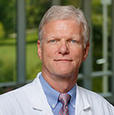Half of what we teach you is wrong. We just don’t know which half.
-Anonymous
My most vivid memory of medical school is the pressure we felt to learn everything that was set before us.
There was pressure to learn and pressure to understand. We gorged ourselves on facts, concepts, diagrams, flashcards, lecture notes and mnemonics. Even as we drank facts and data from a proverbial fire hose, however, we realized entire disciplines were evolving.
For example, much of the Immunology we struggled to memorize in medical school was soon proven incorrect. We searched for information in older textbooks with trepidation, fearing encounters with long-discarded details and theories. We marveled that previous generations of physicians had never been taught tobacco and cancer were somehow linked to each other. How could they have not known?
And then there were changes we encountered in surgery.
When I was just beginning my training, a volunteer faculty member offered to let me assist in a procedure to remove the tumor from a patient’s parotid gland – one of the major salivary glands in the cheek. I was anxious to work with this teacher because he had trained forty years before at one of the most prestigious residency programs in the country.
As we scrubbed, the faculty member carefully explained the operation to me. These operations are tricky because the nerve that controls the facial muscles runs through the gland. The initial step in performing parotid surgery involves identifying and protecting this nerve.
 He crafted an incision hidden in the patient’s skin folds and from this created a narrow one-inch deep tunnel in front of the ear that ran from the skin down to where he expected to find the main trunk of the nerve. I looked in. It was hard to see anything at all. Blood and fluid repeatedly obscured the view.
He crafted an incision hidden in the patient’s skin folds and from this created a narrow one-inch deep tunnel in front of the ear that ran from the skin down to where he expected to find the main trunk of the nerve. I looked in. It was hard to see anything at all. Blood and fluid repeatedly obscured the view.
“Here,” he said. “Watch carefully how I do this. This is the most critical step.”
And so I watched. He pushed and prodded, opening a space between the tissues with a small spreading device. Things did not go well. There was more bleeding than usual, he noted. The patient was large and the tunnel needed to be longer than expected. His angle of approach was apparently a bit off. He repositioned the spreading device over and over – first aiming more superiorly and then more inferiorly. I could sense that he was not happy.
Finally, after a long period of anxious searching, retracting, stretching, and straining, there it was: the trunk of the facial nerve. He poked it gently with a nerve stimulator and the patient’s cheek
twitched.
“There you have it.” he announced. “That’s how you find the nerve!”
I dutifully noted what he had just shown me. That night, I wrote down the steps of the procedure for later reference. The approach I had witnessed seemed perfectly logical. I worried, however, that the initial steps had been so difficult and the risk to the nerve so high that I might never be able to duplicate what I had just been shown.
A few months later, I scrubbed with a different surgeon on a parotidectomy. He too told me that the critical first step involves finding and protecting the nerve.
I looked for the spreading device I had seen used to create the narrow, dark tunnel during the first procedure, but there was none. Before I had a chance to ask the surgeon whether he would need the spreader, he created the same incision but then took a long and wide approach to the nerve, carrying the dissection down to the trunk with a broad front rather than the narrow tunnel I had seen the first time. Before long, he had safely found the nerve and the procedure was off and running. Suddenly, I could see myself being able to someday master this operation.
“Why did the other surgeon use such a limited approach to the nerve?” I asked.
“Perhaps,” the surgeon replied, “that was the way he was taught and he never learned a newer way.”
Innovation and technology are constantly pounding on the surgeon’s door; there is always some new medication, approach or technology. Many of these “latest and greatest” things will disappear with time, but each of them will influence how we think and what we teach. No one consistently picks the winners, but my experience years ago with two parotid surgeons taught me to try to stay open to innovation.
I love the opportunity to teach surgery to the next generation of surgeons, but I am certain there are many, perhaps half, of the things I teach today that will be sources of laughter and wonderment in a couple of generations. I only wish I knew which half. I hope they will be gentle with me.
